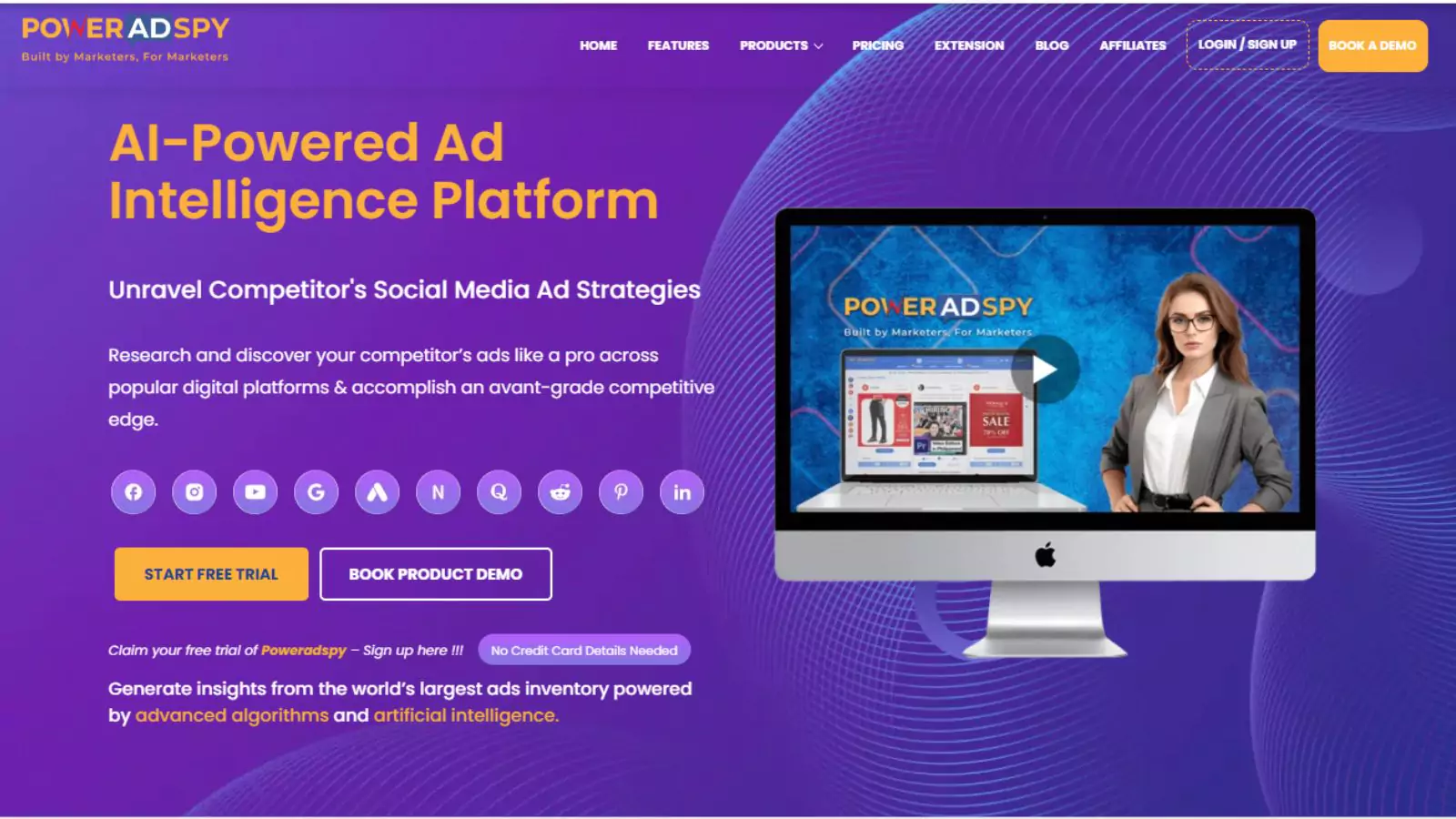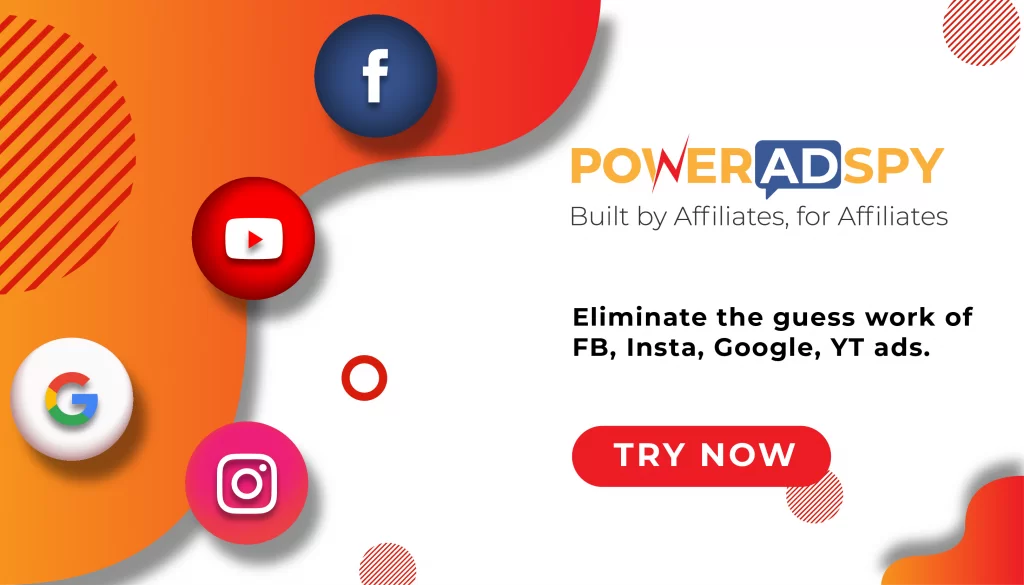All You Need To Know About Facebook Ad Structure
A well-organized Facebook ad structure is the backbone of a successful advertising campaign. Without a clear framework, your ad spend may not yield the desired results, leading to wasted resources and missed opportunities.
The structure of your ad account—from the campaign level down to ad sets and individual ads—directly impacts how effectively you reach your target audience and achieve your marketing goals. By understanding the nuances of fb ad structure, you can tailor your campaigns to optimize performance, improve ROI, and drive meaningful engagement.
In this blog, we’ll break down the key components of Facebook ad structure, providing actionable insights to help you create strategic and successful campaigns.
In a hurry? Listen to the blog instead!
Overview of Facebook Ad Structure
Understanding the structure of a Facebook ad account at the campaign level is crucial for effective advertising. A campaign defines your marketing goals and provides the foundation for the success of your ad account.
As a result, Facebook optimizes your campaigns based on the chosen objectives, which impacts your future actions.
For example, if your goal is to drive traffic to your website and generate leads, you should create two separate campaigns. One campaign should focus on driving traffic, while the other is optimized for conversions. This distinction is essential because the Facebook ad structure and algorithm deliver ads differently depending on the campaign objective.
However, for more effective targeting, tools like PowerAdSpy can give you insights into competitor strategies, helping you refine your campaigns based on high-performing ads in your industry.
Here’s how you might structure it:
Campaign 1 – Blog Traffic: Objective – Link Clicks
Campaign 2 – Lead Generation: Objective – Conversions
When setting up campaigns, consider whether each will include multiple promotions.
Short-Term or Cyclical Promotions
If your promotions are short-term, cyclical, or frequently updated (such as various blog posts), name the campaign based on the overall goal (e.g., “Blog Traffic”). This approach makes it easier to organize and report on individual ad performance.
You can have multiple ad sets within the same campaign, each targeting the same promotions. Facebook ad structure will optimize the best-performing ads, allowing you to track the effectiveness of each ad set.
Long-Term or Evergreen Promotions
For longer-term or evergreen promotions (such as conversion campaigns), it’s best to create separate campaigns for each promotion. This method simplifies strategy and optimization. You can test different ad variations with the same audience and adjust based on which provides the best conversion rates and lowest costs.
With everything related to a specific promotion grouped under one campaign, you gain full control over budget allocation and can optimize for the highest return on investment.
How Does Facebook Ad Structure Work?
To understand how Facebook ads drive results, it’s crucial to grasp the fundamental components of its ad structure. Let’s begin by exploring the core elements that shape your Facebook advertising strategy.
What Is A Facebook Campaign?
A Facebook Ads Campaign is the foundation of your advertising strategy on Facebook, acting as the top-level container that organizes your audiences, targeting methods, bid strategies, and ad creatives around a single advertising objective. It helps streamline your workflow, ensuring that the numerous ads you create remain organized and manageable.
Your journey starts with creating a campaign where you define your objective. Facebook offers six campaign objectives:
- Awareness
- Traffic
- Engagement
- Leads
- App Promotion
- Sales
Each objective guides Facebook ad structure and algorithms to optimize your ads for the best results. For instance, if your goal is to drive traffic, Facebook will show your ads to users who are more likely to click the link. If your goal is conversions, Facebook targets more likely to complete that action.
It’s also beneficial to create multiple campaigns, each with a different objective, depending on your goals. Even for organizational purposes, having more than one campaign is fruitful.
What Is A Facebook Ad Set?
A Facebook Ad Set is the middle layer of your campaign structure, allowing you to define who will see your ads and how much you want to spend. You select target audiences, budgets, bid settings, and ad placements at the ad set level. Within the Facebook ad structure, you have the most control over how you allocate your budget to different audience segments.
Name your ad sets strategically. Especially when you have to manage multiple ad sets across various campaigns. A good naming convention can make future management and reporting
much more uncomplicated.
You can typically divide Ad sets by audience segments, such as location, age, gender, interests, or custom audiences. In this example of Facebook ads, you might have ad sets named “audience_name | location” to keep things organized.
How to Set Up Facebook Ad Set Audiences and Targeting
Targeting is defining the audience you want to reach with your ads. Generally, there are two types of audiences:
- Prospecting: Targeting new users who are not yet familiar with your product.
- Retargeting: Targeting users who have interacted with your product or service before.
In the Facebook ad structure, prospecting audiences are usually built based on interests, locations, or lookalikes, while retargeting audiences are based on data from your website, Facebook page engagement, or customer lists.
What is Audience Overlap?
Audience overlap occurs when a user belongs to multiple target audiences. It can increase your cost-per-click(CPC) because you’re bidding against yourself. If you have overlapping audiences, you can either consolidate or exclude them from each other.
- Exploring Audiences for Prospecting
When creating prospecting audiences, it’s essential not to over-segment. Depending on campaign performance data, start broad and refine your targeting.
- Exploring Audiences for Retargeting
Retargeting involves delivering specific messages to users based on how recently they interacted with your business. For instance, you might target users who visited your website in the last 1-2 days differently from those who visited 16-30 days ago.
To enhance your retargeting efforts, PowerAdSpy’s audience targeting features allow you to analyze successful ads based on specific demographics, behaviors, and interests. This insight helps you create more precise audience segments, ensuring that your retargeting messages reach the right people at the right time.
Facebook Ads Explained
A Facebook Ad is the final component of the Facebook ad structure. It’s the actual creative—be it an image, video, or carousel—that your audience will see. The types of ads you can create depend on your campaign objective and ad set settings. Popular ad formats include:
- Image Ads
- Video Ads
- Slideshow Ads
- Carousel Ads
- Collection Ads
- Instant Experience Ads
- Lead Ads
By creating multiple ad variations and testing them across different ad sets, you can identify what works best for each audience segment. Monitoring performance allows you to improve your ads.
Best Practices of Facebook Ad Structure
Here are some effective strategies that will help you optimize your Facebook Ads campaign structure for maximum impact—applicable to any paid social channel.
-
Utilize Prospecting, Retargeting, and Retention Campaigns
Facebook ad structure and Instagram ad campaigns into three main categories: Prospecting, Retargeting, and Retention.
- Prospecting campaigns focus on acquiring new users by excluding site visitors and customer lists.
- Retargeting campaigns target users who have interacted with your brand, like visiting your site or engaging with posts, excluding existing customers.
- Retention campaigns specifically target your customer list.
This Facebook ad structure allows for precise control, enabling tailored messaging for each user group and appropriate budget allocation.
For example, allocate 15%-20% of your budget to retargeting campaigns, focusing on re-engagement through offers, social proof, or personalized messaging.
-
Separate Evergreen Campaigns from Experimental Campaigns
Always run at least one creative test for a well-rounded Instagram ad strategy and Facebook ad structure. Separate your experimental campaigns from evergreen ones to avoid disrupting your CPA. Allocate most of your budget to your evergreen campaign using proven creatives.
As you identify top-performing ads in your experimental campaign, move them to your evergreen campaign. This ongoing cycle improves click-through rates (CTR), cost per action (CPA), and return on ad spend (ROAS) over time.
For example, when launching new creatives:
- Create a new campaign labeled “Experiments.”
- Target top audience attributes in your ad set.
- Use your previous top-performing ad as a control.
- Test the new creatives against the control ad.
Once you gather sufficient data, move the top-performing variation to your evergreen campaign and continue the process, ensuring you don’t overload an ad set with too many ads.
-
Aim for a Budget that Supports at Least 30 Conversions Weekly
Ensure your prospecting campaigns generate enough data for your pixel to exit its learning phase, which is a crucial part of the Facebook ad structure. Aim for at least 30 conversions per week. For instance, if your CPA is $40, you should budget around $1,200 per week or $4,800 monthly.
-
Experiment with Different Audiences
If your Facebook or Instagram ads target only one audience, you may miss out on potential opportunities. Always test new audiences against your control. Consider using 3-7 ad sets, depending on your budget and customer list for each prospecting campaign.
To refine your audience targeting, utilize ad spy tools like PowerAdSpy. Analyzing competitor ad strategies and discovering successful audience segments can help you optimize your Facebook ad structure and ad strategies. PowerAdSpy assists you in identifying which audiences are performing well in your industry, giving you valuable insights to guide your experimentation.
Advanced Ad Intelligence Tool- PowerAdSpy
PowerAdSpy is a powerful ad intelligence tool designed to help businesses and marketers track and analyze the performance of their competitors’ ads across various platforms. By leveraging its comprehensive features, users can gain valuable insights into successful advertising strategies and optimize their campaigns accordingly.
Key Features of PowerAdSpy
Ad Search and Discovery
PowerAdSpy allows users to search for ads based on diverse criteria like keywords, domains, and ad networks. This feature helps users discover trending ads and how competitors place their products or services.
Competitor Analysis
Users can analyze their competitors’ ad strategies by examining their ad creatives, copy, and targeting methods. This feature provides insights into the ads that perform well in the market.
Ad Trends and Insights
This Facebook ads spy tool provides detailed analytics on ad performance trends within the Facebook ad structure, including engagement metrics like shares, likes, and comments. This data helps users identify which ad formats and messages resonate with audiences.
Geo-Targeting Information
PowerAdSpy offers geo-targeting information, allowing users to see ad placement geographically. It helps you understand regional preferences and optimize ad placements accordingly.
Ad Copy and Creative Analysis
Users can view and analyze ad copy and creative elements to see which visuals and messages work best. This feature assists in crafting compelling ads that attract attention.
Ad Placement Insights
The tool provides insights into ad placement within the Facebook ad structure, whether on social media platforms, search engines, or other websites. This helps users decide where to locate their ads so they get the most exposure.
Competitor Ad Archive
PowerAdSpy maintains a comprehensive archive of ads run by competitors, allowing users to track historical ad performance and strategies over time. This historical data can be invaluable for identifying long-term trends and plans.
Ad Performance Metrics
Detailed performance metrics, including engagement rates, and click-through rates, are available to help users measure the effectiveness of their ads and make data-driven decisions.
By utilizing PowerAdSpy, businesses can gain a competitive edge in their advertising strategies, optimize their ad spend, and improve overall campaign performance through actionable insights and data.
Read More
Facebook Ad Examples: Anatomy And Types
How Does Facebook Advertising Works?
How To Master Facebook Ads Laser Targeting
Essentials Of Facebook Ad Structure
Example audience/ad set rollout:
- Broad: No interest targeting; keep demographic and geographic targeting broad.
- Broad + Layered Demographics: Narrower targeting with specific demographic constraints.
- Interest Theme A: Target particular interests within a similar theme.
- Interest Theme B: Test a different audience theme.
- Lookalike Audience: Experiment with broader percentages, like a 5% lookalike based on a customer list of at least 5,000.
Continue refining your audience strategy as you gather more data.
Prioritize Ad Creative
Ad creative is a crucial performance driver, so it’s essential to use proven strategies while avoiding common mistakes. Your campaign Facebook ad structure should support frequent creative refreshes and iterative testing. Start with these four creative types:
- Square and 9:16 images
- 4:5 and 9:16 animated short videos
- 4:5 and 9:16 long-form UGC videos
- 4:5 and 9:16 short-form UGC videos
For example, when marketing a shoe brand, create image ads with lifestyle or product shots and make 1:1 and 9:16 versions. Image ads can offer lower CPMs and potentially higher ROAS in a video-first world.
For video ads, test different lengths and analyze view percentages, CTR, and ROAS. Over time, you’ll identify patterns that inform your creative strategy.
Pro Tip: Create a creative scorecard to track successful themes and attributes, helping guide future ad development.
Ensure Your Pixel is Learning
Ensure your pixel provides accurate and relevant data. Verify your domain, activate Conversion API, and ensure pixel events are firing at key funnel stages with values assigned. It will improve performance and enable you to test value-based bid strategies alongside volume-based ones.
Wrapping Up
Understanding the Facebook ad structure is key to achieving successful advertising campaigns. By effectively organizing your campaigns, ad sets, and ads, you can ensure that your efforts are aligned with your marketing goals and optimized for the best results. Start by defining clear objectives at the campaign level, which will guide the setup of your ad sets and the targeting of your ads. Pay attention to audience segmentation and avoid overlap to maximize your budget and enhance ad performance.
To further refine your approach, consider using tools like PowerAdSpy. This powerful Facebook ads management tool helps you analyze competitor ads and discover effective ad strategies, providing valuable insights to boost your campaigns.
Regularly analyze your ad performance to refine your strategies and adapt to what works best for your audience. Whether you’re focusing on driving traffic, generating leads, or increasing conversions, a well-structured approach will provide valuable insights and help you make data-driven decisions.









